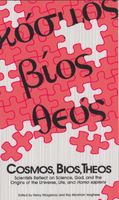
Some examples of the accomplishments of our primitive ancestors are the foundations of what would later become the temple mounts of various civilizations. These foundations often seem to be built with rather large stone blocks.
The most famous and important in modern politics is the Temple Mount in Jerusalem. Another example is a different foundation that later civilizations built their temples on:
(The Earth Chronicles Expeditions: Journeys to the Mythical Past...it was time to start our own investigation. It led, first and foremost, out through the Jupiter temple all the way back and around the ruins, to the western retaining wall with its immense stone blocks, including the famed Trilithon.
The stone blocks that make up the Trilithon weigh more than 1,100 tons each, and they do not lie on the ground itself, but are placed higher, upon other immense, though smaller, stone blocks, cut to have a slanting face, that weigh “only” 500 tons each. (By comparison, the stone blocks in the Giza pyramid average only 2.5 tons.)
There is even now no man-made machine that can lift such weights. Yet in antiquity someone—the “giants,” according to local lore—not only lifted and placed such colossal stone blocks, but also carried them from their quarry located several miles away. This is an indisputable fact, because the quarry has been located and in it one of those colossal stone blocks, whose quarrying had not been completed, still lies partly attached to the native rock. Its immensity is illustrated by the many photographs we took there; its size exceeds that of the Trilithon blocks.
.... Everywhere the original stone blocks were immense; where later additions were made, the stone blocks are much smaller and look pitiful by comparison.
Whatever once stood upon the immense platform, other than in its cut-out northwestern part, one can only speculate. It is clear, however, that whoever planned, constructed, quarried, and transported the colossal stone blocks and then placed them one on top of another had a specific purpose in mind. Whatever went on there in the ancient past seems to have required this massive structure that rose up and up by massive stages.
By Zecharia Sitchin :173-174)
That is the mythical past and speculation about mythologies and archaeology ought to be and are noted by scholars as fraught with uncertainty. That should not hold anyone back from studying such issues. Uncertainty is what tends to keep the scribbling scribes scribbling and the sages of the ages wondering and pondering.
In contrast, Darwinists often try to merge the mythological narratives of Naturalism that they sometimes write in with basic empirical observations or "scientific facts" like the earth being round. It seems that they want people to assume that their mythological narratives have reached the same epistemic level as basic empirical observations. Yet making that sort of associative argument and seeking to conflate Darwinism with basic empirical observations may indicate that the person knows little about extending Darwinian principles far, far into the past while at the same time making them elastic beyond current empirical observations. That type of argument of association made by Darwinists: "It's a fact that all of Life came about by natural selection acting on random mutations...as certain as gravity!" may also illustrate a failure to admit to the limitations of science in general, which can become the foundation of scientism and so the beginning of a path to proto-Nazism if history is any measure.
On science and origins:
How, then, should the scientist “approach origin questions”? With due modesty, I would say, born of the sobering recognition that his methods provide access only to a certain “outer shell” of things. There is of course more than enough work to do for the scientists within his own proper domain; and it could also be said that, to him who has “eyes to see”, that domain, bounded though it be, points beyond itself—even to “the invisible things of God”. At the very least, however, scientist should be aware of the distinction between primary and secondary origins and wary of forcing the former into the mold of the latter as the Darwinists have done. One should remember that science turns forthwith into pseudo-science and superstition the moment it oversteps its own proper bounds.(Cosmsos, Bios, Theos: Scientists Reflect on Science, God, and the Origins of the Universe, Life and Homo sapiens
Edited by Henry Morgenau and Roy Varghese
Astronomers, Mathematicians and Physicists: Wolfgang Smith :116-117



No comments:
Post a Comment